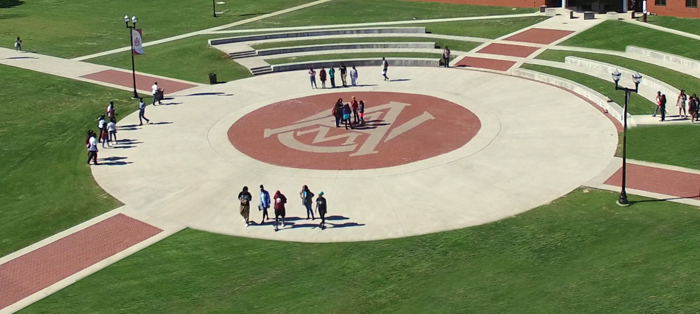Project Description
Alabama A&M University, in collaboration with Teachers College, Columbia University, is pleased to announce our upcoming NEH Summer Institute for humanities teachers, From Alabama to New York: How the Great Migration Shaped the Harlem Renaissance.
This hybrid institute explores the socio-cultural and economic connections between the Harlem Renaissance and the Great Migration. During the first segment of the institute, participant scholars will meet for online workshops overviewing the Great Migration and the Harlem Renaissance.
Begining in the second week of July, scholars will arrive in Huntsville, AL and begin their in-person study of the Great Migration at Alabama A&M University, a Historically Black University. Throughout the week, participants will travel throughout Alabama to explore the social, economic, legal and cultural conditions that led to the Great Migration.
For the final week of the institute, scholars will travel to New York City, where they will examine the aspects of the Harlem Renaissance that were influenced by the Great Migration. Working in the Smith Learning Theater at Teachers College, Columbia University, scholars will transform their newly-developed understanding of the institute topics into digital media representations.
Throughout the institute, participants will investigate the ways in which representation shapes our understanding of history. From this investigation of historical content and representation, participants will create project-based humanities curricula inspired by their experiences in the institute.
John Hope Franklin, regarded as the Dean of African American history, once noted that the “Nadir” period, 1877-1923, was considered the lowest point economically and socially for African Americans in the United States, especially in the American South. No other place in the country encapsulates such societal struggles as the state of Alabama. A place where “Jim Crow” policies were the laws of the land. From Huntsville’s school segregation to Birmingham’s voting restrictions, Alabama political leaders cultivated a tense racial climate for Black Alabamians, leading many to flee to seek economic and social changes in sanctuary cities in the northern and midwestern parts of the United States.
Like many other Black southerners, Black Alabamians were determined, driven, and encouraged to capture a better way of life for themselves and their family members. Isabel Wilkerson reflects on this unorganized and exhausting journey. She paints a picture of the most significant demographic shift and the exodus of people in American history in her book, The Warmth of Other Suns. These newly converted Black northerners and Midwesterners found better-paying jobs, suitable living conditions, and an atmosphere filled with cultural opportunities. Empirically, Ellora Derenoncourt (2022) supports Wilkerson’s argument by showing why some northern cities afforded migrants better opportunities than others. Black migrants in cities like Detroit, New York, and Chicago made nearly double the earnings of those who remained in the South. This increased disposable income allowed them to partake in cultural and recreational activities.
Although earning potential for Southern African Americans was a prominent factor in their decision to leave, they also sought a more welcoming social and cultural environment, which helped to foster the growth of new urban environments such as Harlem, New York. In her book, Great Migration and The Harlem Renaissance, editor Sabina G. Arora gives credence to Black migrants’ contributions to New York's culture. The text shows how Black migrants turned artists, dancers and performers became part of the most significant Black movement of the 20th century.
These complexities are evident in the Harlem Renaissance, 1918 to the mid-1930s, where literature, music, and economic success flowed and flourished like the mighty Mississippi River. Whether it was Mississippi transplant Richard Wright writing exemplary fiction, Alabama-born and Florida-raised Zora Neale Hurston engaging in the creative representation of her anthropological research, or musician and Alabama emigrant W.C. Handy, African Americans who migrated from the South were not short of a thriving social and economic environment during the Harlem Renaissance. Equally important, although less acknowledged by scholars, are those contributions by Alabama migrants who contributed to the Harlem Renaissance. Who were those Alabamians who migrated to New York? What were their contributions? How are we telling their stories?
The scholarship on the connection between Alabama and New York is limited at best. It is imperative that historians and researchers entirely write the story of Alabama’s Great Migration migrants’ contributions to the Harlem Renaissance. Humanities instructors who teach the Great Migration must challenge the simplified narrative of arrival in a promised land and explore the complexities of Black reception and relocation into the North.
Thus, with the 60th anniversary of the Civil Rights Act of 1964 on the horizon, we propose a three-week institute for K 12 Educators to educate and assist in developing a curriculum on America’s Great Migration. The institute will explore and tell the stories of Black Alabamians and others who traveled to New York during the Great Migration and their contributions to the Harlem Renaissance and New York’s culture. Through workshops, interviews, visiting landmarks, research centers, and archival research, participants will gain a perspective of the will and the determination of these migrants. Participants will have a renewed sense of who we were and who we are as a nation through the lens of migrants and how one group of people’s struggles developed into profound music and literary works and examples of economic success. Upon completion of the institute, participants will gain a deeper understanding and a newfound respect for the overarching theme of these many migrants, that is, “I am not where I want to be; I am not where I ought to be, but thank God, I am not where I used to be.”
Questions regarding applications and program requirements should be directed to program project directors at al2ny.neh@gmail.com.

